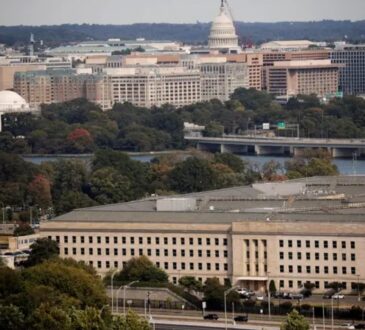
President Donald Trump met with Israeli Prime Minister Benjamin Netanyahu at the White House on April 7, 2025, amid growing global concerns over the violent and unstable situation in the Middle East. The ongoing conflict in Gaza, which many hoped would be calmed by a ceasefire, has only intensified. Bombings have continued, and many innocent lives have been lost, prompting more than two dozen nations to publicly call for an immediate stop to what they describe as senseless and inhumane violence.
Alongside the Gaza conflict is the recent 12-day war between Israel and Iran, which included U.S. airstrikes on Iran’s nuclear sites. These developments have only made the region more unstable. The presence of highly advanced U.S. military technology might discourage enemies from direct confrontation, but when the U.S. gets involved in military conflicts, especially in the Middle East, the consequences are rarely simple or short-lived.
One result of this military involvement was Iran launching a missile strike on U.S. bases in Qatar. While this attack may not have caused significant damage, it serves as a reminder that foreign tensions can easily create domestic threats. The kind of surprise and destruction seen on September 11, 2001, is always a possibility, especially from groups that may lie in wait, patiently preparing for the right moment to strike.
Inside the U.S., potential targets for such attacks are everywhere. Disrupting the country’s food or water systems would be difficult, but not impossible. However, one of the more alarming vulnerabilities lies in the nation’s nuclear power plants. The U.S. has 54 nuclear power stations with 94 reactors spread across 28 states. These plants provide nearly a fifth of all the electricity in the country. Many of them are located close to major cities, including Chicago, Philadelphia, Miami, Charlotte, and Minneapolis. Any attack that impacts the safety of one of these facilities could put millions of lives in danger.
If the power grid is compromised, it wouldn’t just shut off lights — it would disrupt the entire digital backbone of the country. Financial systems, public transportation, hospitals, communication networks, and air traffic would all be affected. The July 2024 cyber incident involving CrowdStrike — where millions of computers were suddenly unusable — showed just how vulnerable digital systems are. That disruption wasn’t even caused by a power outage, yet it still paralyzed much of the government and private sectors, including grounding flights.
That event also underscored how devastating cyberattacks can be. These kinds of attacks don’t require the attacker to be physically present or even to put themselves in harm’s way. Cyberattacks are hard to trace quickly, and they allow bad actors to cause chaos from a distance. They are also difficult to predict, as they often slip past defenses until it’s too late. Even with constant monitoring, many warning signs turn out to be false alarms, which can cause people to ignore the real threats when they finally appear.
Unlike traditional warfare, a powerful military can’t do much to stop a cyberattack. Protecting against them requires investments in cybersecurity, information sharing, and international cooperation. Unfortunately, all of these efforts come with high costs, and the threats themselves are hard to define until they strike.
Despite President Trump declaring that the strikes on Iran’s nuclear program had resulted in “total obliteration,” intelligence reports suggest otherwise. Iran still appears to maintain significant nuclear capabilities. Many experts have noted the eerie similarity between this operation and a scene from the film *Top Gun: Maverick* — but real life hasn’t followed Hollywood’s neat, triumphant ending.
These recent military actions also send messages to other powerful nations like China and Russia. They are watching carefully, learning not only what the U.S. can do, but also what its limits are. In the long run, revealing too much of U.S. military strategy and capability may make the country more vulnerable, not more secure.
There’s no clear or easy resolution to the current Middle East crisis. Israel’s determination to eliminate Iran’s nuclear capabilities fueled the war with Iran, and its continued military operations against Hamas in Gaza are killing many innocent civilians. The pain and suffering are not limited to one side — Iranians, Palestinians, and Israelis alike are caught in the violence and deserve more security and respect during these troubling times.
France has recently made a bold move by announcing its intention to recognize Palestine as a state. This is a significant political stance that could inspire other countries to follow. However, both the U.S. and Israeli governments have strongly opposed France’s position, signaling more diplomatic tensions ahead.
Given how complex and fragile the situation is, the best move for the U.S. right now may be to step back from any further military involvement in the region. The strongest negotiators don’t need to use force to get results. Continuing to rely on bombs and missiles will only deepen hostility and may eventually bring those hostilities back home. Diplomacy, not warfare, must take center stage if any real, lasting solution is to be reached.
The reality is, in a digital world, threats aren’t just on the battlefield — they exist in our power grids, our airports, our communication networks, and our hospitals. Cyberattacks could hit any one of these, and once they do, the impact can be immediate and devastating. While military might can intimidate some adversaries, what truly keeps a nation secure are strong international relationships and trade agreements that promote cooperation instead of conflict. Right now, the U.S. is falling behind in that area — and the consequences could be far more serious than most realize.




